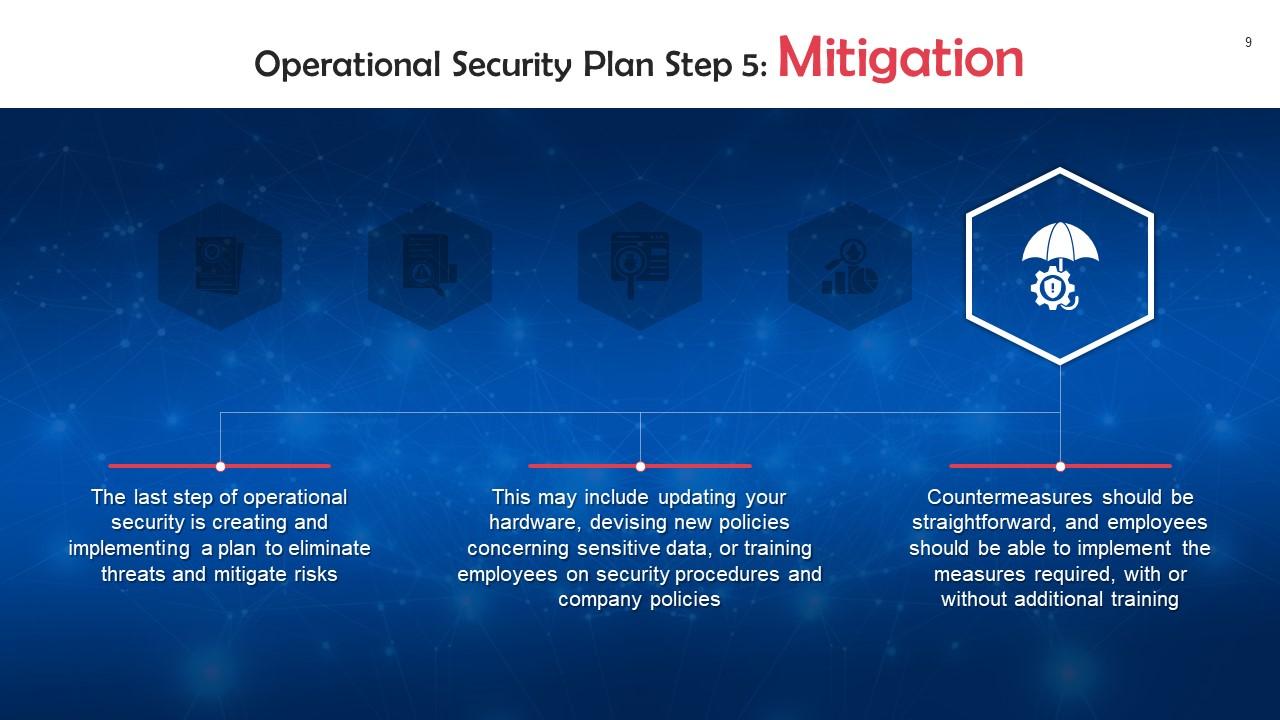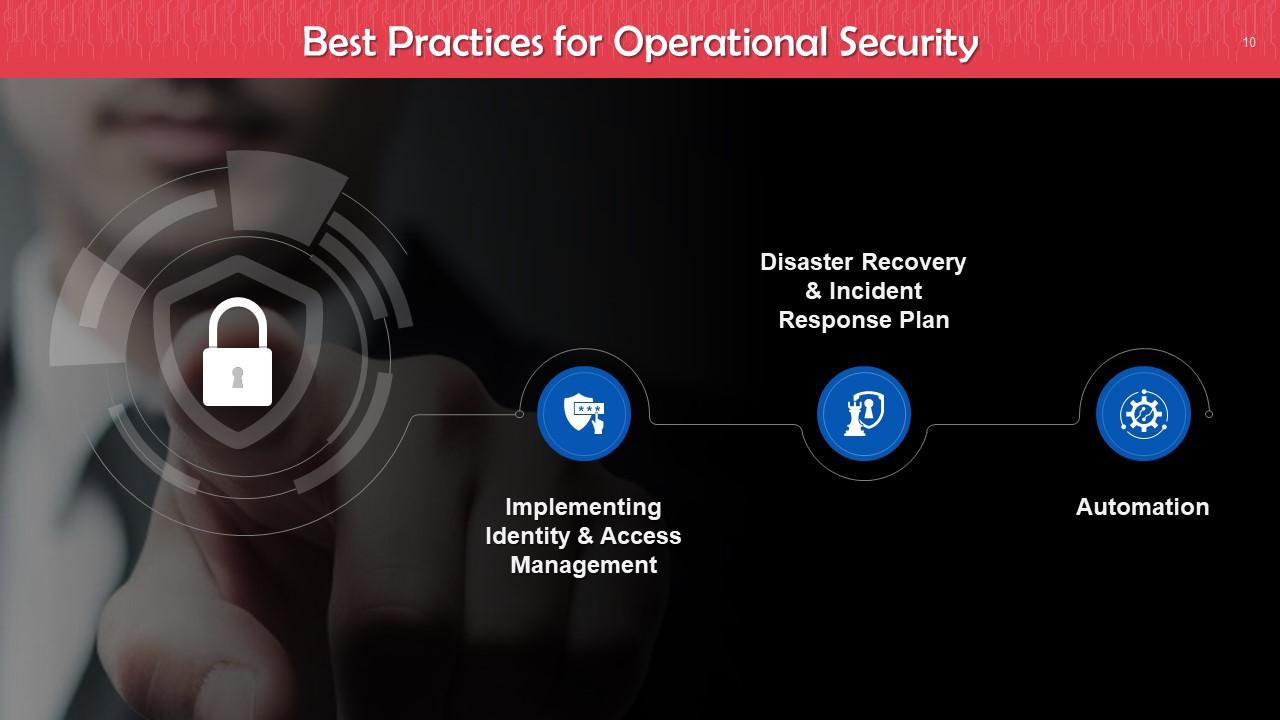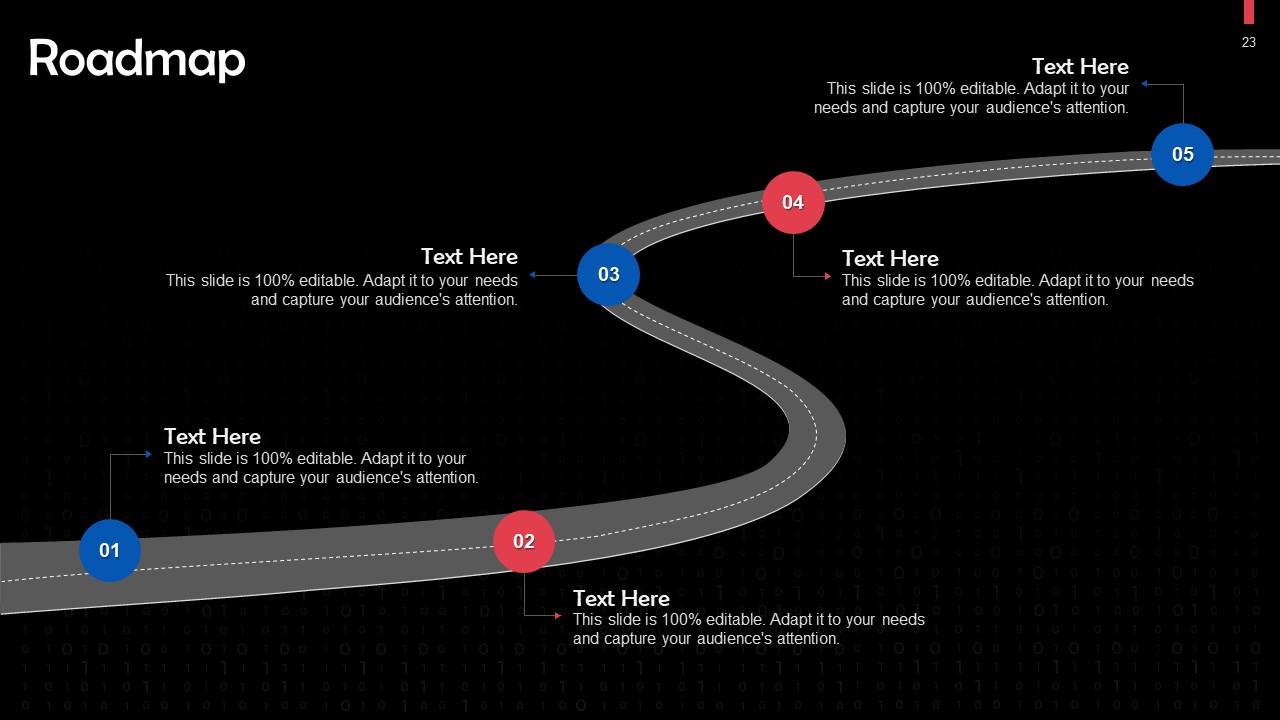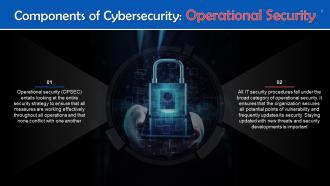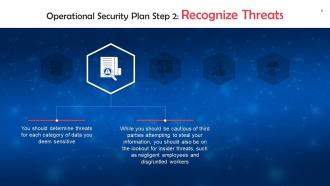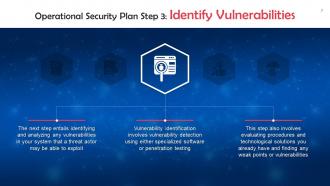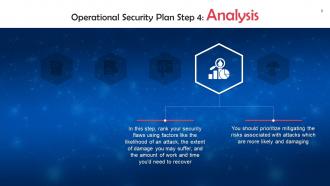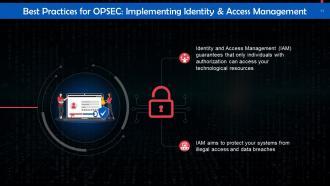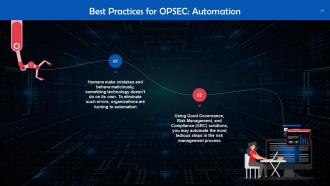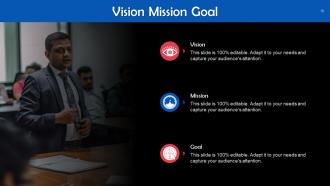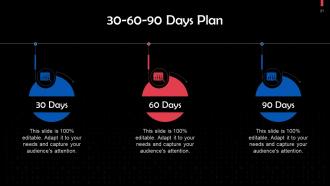Operational Security A Cybersecurity Component Training Ppt
This set of slides, in detail, explains the concept of operational security, a component of cybersecurity. It covers its components, importance, and best practices. Further, it includes steps to create an operational security plan.
- Google Slides is a new FREE Presentation software from Google.
- All our content is 100% compatible with Google Slides.
- Just download our designs, and upload them to Google Slides and they will work automatically.
- Amaze your audience with SlideTeam and Google Slides.
-
Want Changes to This PPT Slide? Check out our Presentation Design Services
- WideScreen Aspect ratio is becoming a very popular format. When you download this product, the downloaded ZIP will contain this product in both standard and widescreen format.
-

- Some older products that we have may only be in standard format, but they can easily be converted to widescreen.
- To do this, please open the SlideTeam product in Powerpoint, and go to
- Design ( On the top bar) -> Page Setup -> and select "On-screen Show (16:9)” in the drop down for "Slides Sized for".
- The slide or theme will change to widescreen, and all graphics will adjust automatically. You can similarly convert our content to any other desired screen aspect ratio.
Compatible With Google Slides

Get This In WideScreen
You must be logged in to download this presentation.
PowerPoint presentation slides
Presenting Operational Security a Cybersecurity Component. This PPT presentation is thoroughly researched by the experts, and every slide consists of appropriate content. All slides are customizable. You can add or delete the content as per your need. Not just this, you can also make the required changes in the charts and graphs. Download this professionally designed business presentation, add your content and present it with confidence.
People who downloaded this PowerPoint presentation also viewed the following :
Content of this Powerpoint Presentation
Slide 2
This slide talks about operational security. Operational security entails looking at the entire security strategy to ensure that all measures are working effectively throughout all operations and that none conflict with one another.
Slide 3
This slide discusses the importance of operational security. OPSEC employs the risk management approach to identify potential threats and vulnerabilities before they're exploited; this method can shield your organization against potential business disruptions that could be financially crippling.
Slide 4
This slide lists steps to create an operational security plan. These are: Identifying information assets, threats, vulnerabilities, performing analysis, and mitigation
Slide 5
This slide discusses the first step of an operational security plan: Identifying Information Assets. The first step is to consider what information may be the most valuable or appealing to a malicious actor and how far they might go to obtain it.
Slide 6
This slide talks about the second step of an operational security plan: Recognize Threats. You should determine the threats for each category of data you deem sensitive.
Slide 7
This slide discusses the third step of an operational security plan: Identifying Vulnerabilities. Vulnerability identification involves vulnerability detection using either specialized software or penetration testing.
Slide 8
This slide talks about the fourth step of an operational security plan: Analysis. In this step, rank your security flaws using factors like the likelihood of an attack, the extent of damage you may suffer, and the amount of work and time you'd need to recover.
Slide 9
This slide discusses the last step of an operational security plan: Mitigation. This may include updating your hardware, devising new policies concerning sensitive data, or training employees on security procedures and company policies.
Slide 10
This slide lists best practices for operational security or OPSEC. These are: Implementing identity & access management, disaster recovery & incident response plan, and automation.
Slide 11
This slide gives information about implementing identity and access management for operational security. IAM ensures that only individuals with authorization can access your technological resources.
Slide 12
This slide talks about disaster recovery and incident response plan for operational security. A DRP will assist you in regaining access and functionality of your IT infrastructure after a cyberattack.
Slide 13
This slide discusses the importance of automation for operational security. Humans make mistakes and behave maliciously, something technology doesn't do on its own. To eliminate such errors, organizations are turning to automation.
Operational Security A Cybersecurity Component Training Ppt with all 33 slides:
Use our Operational Security A Cybersecurity Component Training Ppt to effectively help you save your valuable time. They are readymade to fit into any presentation structure.
-
“One of the best experiences with SlideTeam for my presentation.Everything on time, communication is efficient and price is reasonable. All good in one place.”
-
I was mind-blown by the services that SlideTeam provided me. Thanks a ton!










